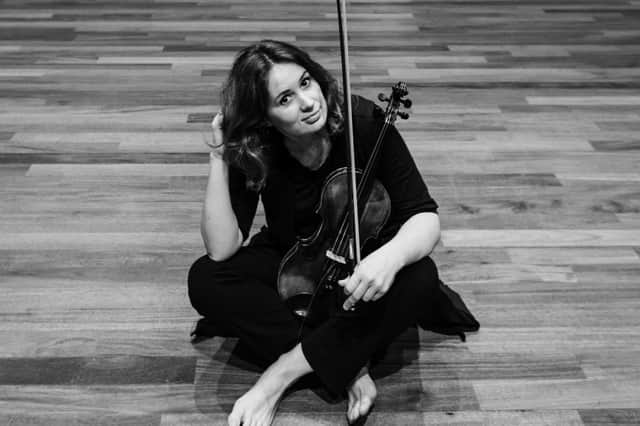Music review: RSNO & Patricia Kopatchinskaja, Glasgow Royal Concert Hall New Auditorium


RSNO & Patricia Kopatchinskaja, Glasgow Royal Concert Hall New Auditorium ****
Away from the grinding diplomacy at the SECC, Moldovan violinist Patricia Kopatchinskaja had a chilling, sincere and direct musical message to deliver as part of the cultural programme surrounding COP26: a quasi-theatrical presentation Dies Irae, in which she featured alongside musicians from the RSNO and Royal Conservatoire of Scotland.
Advertisement
Hide AdAdvertisement
Hide AdThis was, as the title suggests, anything but an hour of sweet music-making. Out of the barren electronic landscape of Giacinto Scelsi’s Okanagon came the darkened, explosive entrance of an agitated Kopatchinskaja and RSNO Baroque-style ensemble in Biber’s famously pugilistic Battalia, each eccentric movement giving way to one from the more contemporary surrealism of George Crumb’s anti-Vietnam War quartet, Black Angels. It was clear, even by this point, that extraction from the comfort zone applied equally to the audience as to the musicians.
Then from backstage, a moment that seemed to assuage the foregoing visual and aural cacophony, the RCS Vocal Ensemble, under Tim Dean, in Lotti’s despairing motet Crucifixus; but only momentarily, giving way to a raucous, deliberately irritating invasion of RCS trombonists, and a bizarrely moving improvisation that pointed the way, via the calmer territory of John Dowland, to Galina Ustwolskaja’s Komposition No 2: Dies Irae.
Written under the old Soviet regime, this saturating 1970s work was presented as a haunting cortege and meditation on The Last Judgement, performed by eight (mainly RCS) double basses and a front-stage coffin-like box, which Kopatchinskaja struck menacingly with hammers and ultimately deafening force.
But that wasn’t the final say. That was played out against the haunting intonation of the traditional Dies Irae plainchant, the cast processing with torchlights and ticking metronomes that were gradually extinguished to the point where a shrouded Kopatchinskaja was the only remaining bearer. Light out, metronome silenced, point made.
A message from the Editor:
Thank you for reading this article. We're more reliant on your support than ever as the shift in consumer habits brought about by coronavirus impacts our advertisers.
If you haven't already, please consider supporting our trusted, fact-checked journalism by taking out a digital subscription at https://www.scotsman.com/subscriptions